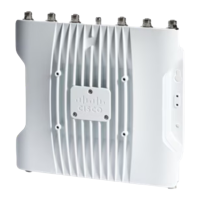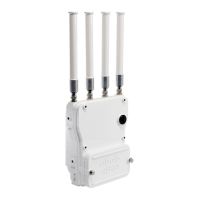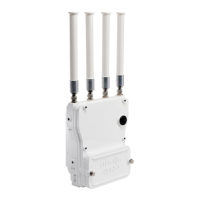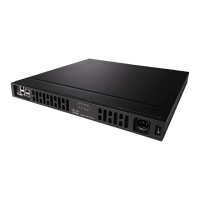6-16
Cisco Wireless ISR and HWIC Access Point Configuration Guide
OL-6415-04
Chapter 6 Configuring Authentication Types
Matching Access Point and Client Device Authentication Types
Use the no form of these commands to reset the values to default settings.
Matching Access Point and Client Device Authentication Types
To use the authentication types described in this section, the access point authentication settings must
match the authentication settings on the client adapters that associate to the access point. Refer to the
Cisco Aironet Wireless LAN Client Adapters Installation and Configuration Guide for Windows for
instructions on setting authentication types on wireless client adapters. Refer to
Chapter 5, “Configuring
Encryption Types,” for instructions on configuring encryption on the access point.
Table 6-2 lists the client and access point settings required for each authentication type.
Note Some non-Cisco client adapters do not perform 802.1x authentication to the access point unless you
configure Open authentication with EAP. To allow both the Cisco access point clients using LEAP and
non-Cisco clients using LEAP to associate using the same SSID, you might need to configure the SSID
for both Network EAP authentication and Open authentication with EAP.
Step 6
countermeasure tkip hold-time
seconds
Configure a TKIP MIC failure holdtime. If the access point
detects two MIC failures within 60 seconds, it blocks all the
TKIP clients on that interface for the holdtime period.
Step 7
end Return to privileged EXEC mode.
Step 8
copy running-config startup-config (Optional) Save your entries in the configuration file.
Command Purpose
Ta b l e 6-2 Client and Access Point Security Settings
Security Feature Client Setting Access Point Setting
Static WEP with open
authentication
Create a WEP key and enable Use
Static WEP Keys and Open
Authentication
Set up and enable WEP and enable
Open Authentication for the SSID
Static WEP with shared key
authentication
Create a WEP key and enable Use
Static WEP Keys and Shared Key
Authentication
Set up and enable WEP and enable
Shared Key Authentication for the
SSID
LEAP authentication Enable LEAP Set up and enable WEP and enable
Network-EAP for the SSID
1
EAP-FAST authentication Enable EAP-FAST and enable
automatic provisioning or import a
PAC file
Set up and enable WEP and enable
Network-EAP for the SSID
1
